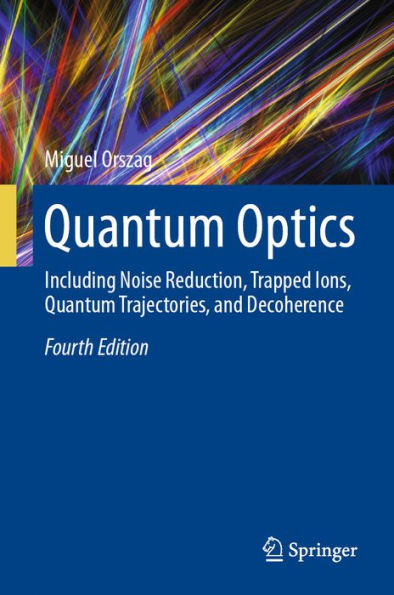Quantum Optics gives a very broad coverage of basic laser-related phenomena that allow scientist and engineers to carry out research in quantum optics and laser physics. It covers quantization of the electromagnetic field, quantum theory of coherence, atom-field interaction models, resonance fluorescence, quantum theory of damping, laser theory using both the master equation and the Langevin theory, the correlated emission laser, input-output theory with applications to non-linear optics, quantum trajectories, quantum non-demolition measurements and generation of non-classical vibrational states of ions in a Paul trap. In this second edition, there is an enlarged chapter on decoherence, as well as additional material dealing with elements of quantum computation, entanglement of pure and mixed states as well as a chapter on quantum copying and processors.
"1123110871"
These topics are presented in a unified and didactic manner. The presentation of the book is clear and pedagogical; it balances the theoretical aspect of quantum optics and quantum information theory with recent relevant experiments.
Quantum Optics: Including Noise Reduction, Trapped Ions, Quantum Trajectories, and Decoherence
Quantum Optics gives a very broad coverage of basic laser-related phenomena that allow scientist and engineers to carry out research in quantum optics and laser physics. It covers quantization of the electromagnetic field, quantum theory of coherence, atom-field interaction models, resonance fluorescence, quantum theory of damping, laser theory using both the master equation and the Langevin theory, the correlated emission laser, input-output theory with applications to non-linear optics, quantum trajectories, quantum non-demolition measurements and generation of non-classical vibrational states of ions in a Paul trap. In this second edition, there is an enlarged chapter on decoherence, as well as additional material dealing with elements of quantum computation, entanglement of pure and mixed states as well as a chapter on quantum copying and processors.
These topics are presented in a unified and didactic manner. The presentation of the book is clear and pedagogical; it balances the theoretical aspect of quantum optics and quantum information theory with recent relevant experiments.
81.99
In Stock
5
1

Quantum Optics: Including Noise Reduction, Trapped Ions, Quantum Trajectories, and Decoherence

Quantum Optics: Including Noise Reduction, Trapped Ions, Quantum Trajectories, and Decoherence
eBook (Fourth Edition 2024)
$81.99
$109.00
Save 25%
Current price is $81.99, Original price is $109. You Save 25%.
Related collections and offers
81.99
In Stock

Product Details
| ISBN-13: | 9783031548536 |
|---|---|
| Publisher: | Springer-Verlag New York, LLC |
| Publication date: | 06/29/2024 |
| Sold by: | Barnes & Noble |
| Format: | eBook |
| File size: | 44 MB |
| Note: | This product may take a few minutes to download. |
About the Author
From the B&N Reads Blog
